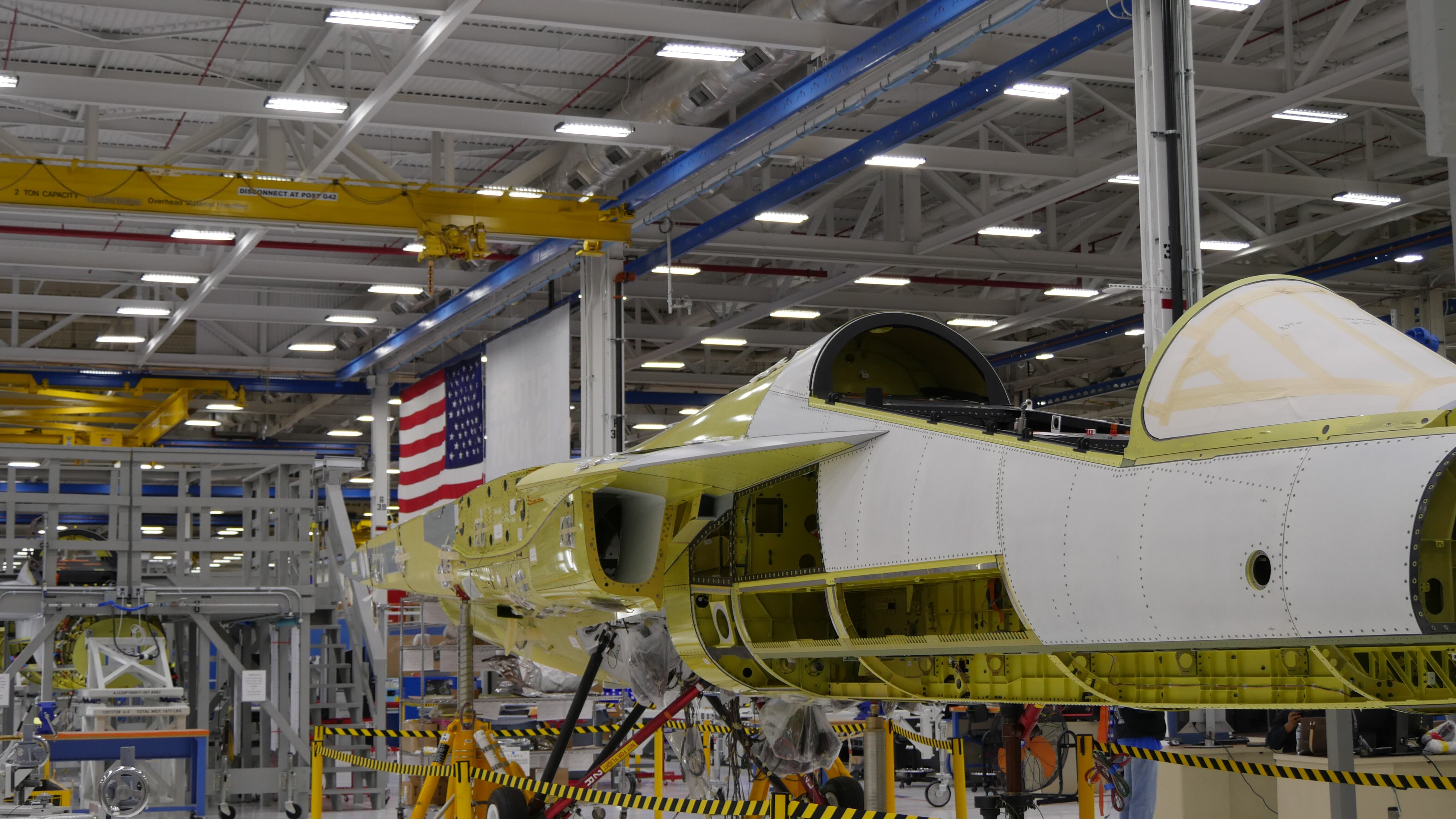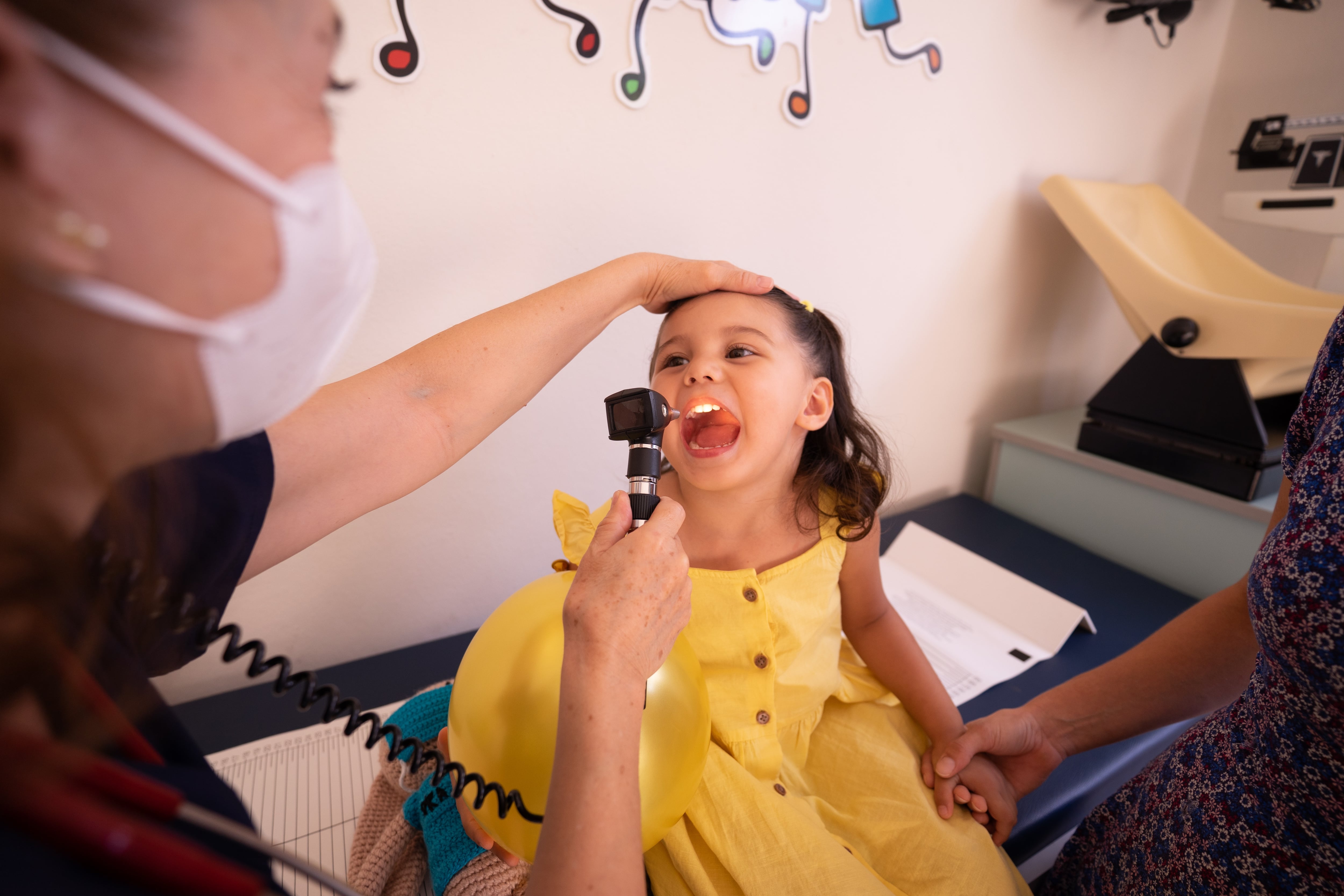NATIONAL HARBOR, Md. — The Air Force is laying the groundwork to start incorporating the T-7A Red Hawk into its pilot training operations.
But the service is still about two years away from the first student pilots learning in the new, fifth-generation, Boeing-made jet. Before that can happen, the Air Force has to train its own trainers, said Air Education and Training Command deputy commander Maj. Gen. Clark Quinn.
The Air Force is now in the process of buying 351 T-7s to replace its aging T-38 Talon jets. T-38s are roughly six decades old and were designed to teach pilots to fly Vietnam-era third-generation jets, such as F-100 Super Sabres, F-105 Thunderchiefs and F-4 Phantoms, Quinn said in a Sept. 22 interview at the Air and Space Forces Association’s Air Space Cyber conference.
“All of the aircraft that the T-38 was designed to train for retired 30-plus years ago,” Quinn said.
T-38s have continued to be used to train pilots to fly fourth-generation jets like the F-15 Eagle and F-16 Fighting Falcon. But when it comes to the F-22 and F-35, the Talon’s design doesn’t translate, and pilots now must learn to fly on actual fifth-generation jets. The Air Force has a limited number of those jets to use for training, hindering its ability to teach pilots to fly modern fighters.
That is why the Air Force issued Boeing a $9.2 billion contract in 2018 to start building the T-7. It was named the Red Hawk in honor of the Tuskegee Airmen, pioneering Black airmen who flew red-tailed fighters to escort bombers during World War II.
The road has since been rocky, with the program facing delays, supply chain crunches and design flaws that had to be corrected — but it is moving forward. Boeing has now delivered all six test Red Hawks to the Air Force, with the first having arrived in November 2023.

The first non-test T-7 is scheduled to arrive Dec. 5 at Joint Base San Antonio-Randolph in Texas, Quinn said.
But that won’t mark the beginning of actually teaching new pilots to fly in the T-7, Quinn cautioned. Before that happens, the Air Force’s cadre of instructor pilots need to familiarize themselves with the new, advanced trainer jet, he said, and maintainers need to learn how to keep it in flying shape.
The first T-7 at Randolph won’t be flying every day, Quinn said — but it will need to fly to put some wear and tear on the jet for the maintainers to practice repairing. At first, Boeing personnel will handle most of the jets’ maintenance while teaching Air Force maintainers, who will take on a greater repair role over time.
The second T-7 will arrive at Randolph sometime in spring 2026, Quinn said. The slow growth of the T-7 fleet will then begin to accelerate until it hits 14 jets at Randolph and reaches initial operational capability in August 2027, he said.
At that point, Quinn said, more instructor pilots will know how to teach new pilots in the T-7.
In early 2028, jets will start to arrive at the 14th Flying Training Wing at Columbus Air Force Base in Mississippi. That will be the first location where new students will learn how to fly in the T-7. By that point, he said, the Air Force will be buying two or three jets each month from Boeing, most of which will go straight from the company’s St. Louis, Missouri, factory to Columbus.
When the T-7 is up to full-rate production, Quinn said, the Air Force plans to bring on between 48 and 60 new jets per year. This would allow the service to change out at least a full training squadron each year, he said.
“When we’re buying that many a year, you can change a wing in essentially a year and a half,” Quinn said. “Once we hit ’28 and ’29, we start getting aircraft quickly, and the bases start recapitalizing from T-38s to T-7s pretty quickly.”
New jet trainer, new lesson plan
While the T-7 is, effectively, a replacement for the T-38, Quinn said the Air Force wants it to lead to more — a revamping of how the service trains new pilots.
“If all we do is think of it as a new T-38, we’re really going to miss a lot of opportunities,” Quinn said.
AETC is poring over its pilot training plans to figure out what tactics and skills it still teaches that are now out of date and could be scratched, Quinn said.

For example, when the T-38 syllabus was first drawn up, the Air Force commonly sent large numbers of fighters into battle together, Quinn said. This meant student pilots had to routinely practice formation takeoffs and landings.
But operational commanders don’t use those tactics anymore, Quinn said, so AETC has dropped formation takeoffs and landings from its syllabus. And as older planes like the F-15C and A-10 Warthog retire and new jets come on, Air Force pilot training courses will change even more.
Sometimes, said 19th Air Force commander Maj. Gen. Gregory Kreuder, student pilots can pick up bad habits from learning to fly in outdated jets that they later have to unlearn.
Quinn said that during his time as a T-38 instructor pilot, he spent about a quarter of the syllabus just teaching students how to land the jet without crashing.
The T-38 is extremely fast and has unique flight characteristics during the landing process. For example, it has no leading edge flaps on its wings, Kreuder said, which can make the T-38 prone to stalling.
If that happens, “you’ve got to know what to do quickly, or you can be in big trouble,” Kreuder said. “Too much of the time that we’re spending is towards [teaching flying methods for] aircraft that no longer exist.”
The T-7, with its modern avionics and systems, flies much better than the T-38, Quinn said. This will allow instructors to spend more time teaching future pilots the skills they’ll need when flying advanced fighters and bombers, including — when the time comes — the sixth-generation F-47 and B-21 Raider bomber.
“Over time, I have seen our aircraft get easier to fly and harder to employ,” Kreuder said. “The F-35 is the easiest aircraft to fly that I have ever flown. We want pilots focused on employing the mission weapon systems, and not focused on whether or not they’re going to stall and fall out of the sky.”

The T-7 also has multiple displays mounted in its cockpits, similar to the F-35’s, Kreuder said, which will help student pilots learn to employ weapons in a training environment closer to a real-world scenario.
“The cockpits are very representative of the fleet we have,” Kreuder said. The T-7 is “a very gentle aircraft. I got to fly it, it flies a lot like an F-16 and an F-35. It’s very powerful, very smooth, a very gentle handling. It’s right what we need.”
That will also make it easier for student pilots to spend time in on-the-ground training simulators, learning the finer points of employing sensors, weapons and other systems, he said.
As the Air Force revamps its training programs to suit the T-7, the service is looking to see if there are overlooked vital skills to teach that can take the place of dropped lessons — or even if it can shorten the course and graduate pilots even quicker.
And even though the advanced T-47 fighter is still in its early stages and little is known about how it will fly, the Air Force’s trainers are already starting to think ahead to the sixth-generation era.
As jets advance, Kreuder said, their software becomes increasingly important, and the T-7 will need to adapt to keep up with the T-47.
“We need something that we can upgrade, that is not hardwired,” Kreuder said. “Software is the future. As long as we can [upgrade], we can keep somewhat up with the basics.”
AETC is also looking towards a future where fighter pilots fly into battle alongside semi-autonomous drone wingmen, known as collaborative combat aircraft, which would attack enemies, conduct jamming operations or recon or serve as decoys to lure enemy fire.
The Air Force could decide that pilots should learn to employ CCAs once they arrive at their operational unit, Quinn said. Or, Kreuder said, AETC may start folding CCA simulations into the T-7’s ground training programs.
But much of how CCA training will work is still to be decided.
“We’re going to have to adapt to [CCAs], clearly,” Kreuder said. “Some of it we can do with computers in the … simulator environment. Do I need to actually see the thing that I’m interacting with in order to train to it? We’re at the very beginning of the conversation.”
Stephen Losey is the air warfare reporter for Defense News. He previously covered leadership and personnel issues at Air Force Times, and the Pentagon, special operations and air warfare at Military.com. He has traveled to the Middle East to cover U.S. Air Force operations.





